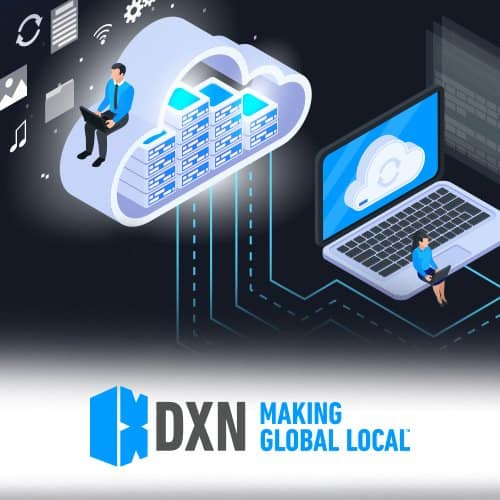Servers, clients, and the infrastructure that connects them are the foundation of the Internet. Clients send requests to servers, and servers respond. Cloud computing differs from this model in that cloud servers do more than just respond to requests; they also run programmes and store data on behalf of the client.
Cloud is enabled by the internet through Cloud Service Providers (CSP). CSP’s host the applications and services needed by their customers at remote data centres. These resources are made available to their customers via a monthly subscription fee or customers are billed according to usage. CPS computing services give their customers access to – applications, servers (physical servers and virtual servers), data storage, development tools, networking capabilities, and more.
Because computing and storage take place on servers in a data centre rather than locally on the user device, users can access the same files and applications from almost any device.
Cloud computing, when compared to traditional on-premises IT, and depending on the cloud services you choose aids in the following tasks:


Reduced IT costs: Cloud computing allows you to offload some, or all of the costs and effort associated with purchasing, installing, configuring, and managing your own on-premises infrastructure.
Pay for what you need.

Enhance agility and time-to-value: Instead of waiting weeks or months for IT to respond to a request, purchase and configure supporting hardware, and install software, your organisation can start using enterprise applications in minutes with the cloud. You can also enable specific users to help themselves to software and support infrastructure via the cloud.
It’s quick, simply plug and play.

Scale more easily and affordably: The cloud provides elasticity – rather than purchasing excess capacity that sits unused during slow periods, you can scale capacity up and down in response to traffic spikes and dips. You can also use your cloud provider’s global edge network to bring your applications closer to users all over the world.
Pay for what you use
Cloud computing also refers to the technology that makes cloud computing possible. Virtualized IT infrastructure consists of servers, operating system software, networking, and other infrastructure that has been abstracted using special software and can be pooled and divided across physical hardware boundaries. A single physical server, for example, can be divided into multiple virtual servers.
Cloud providers can make the best use of their data centre resources by utilising Virtualization. Many businesses have adopted the cloud model for their on-premises infrastructure to maximise utilisation and reduce costs compared to traditional IT infrastructure.
There’s a cloud for everyone
There are cloud models and services with device offerings and appeal. The most common cloud deployments are:
Private Cloud: A private cloud is a cloud environment in which all cloud infrastructure and computing resources are dedicated to and accessible only to a single company.
Public Cloud: The public cloud is an IT model in which on-demand computing services and infrastructure are managed by a third party and shared by multiple organisations via the public Internet. Individual servers can be shared by multiple companies using virtual machines, a situation known as “multitenancy”, because multiple tenants rent server space on the same server.
Hybrid Cloud: Hybrid cloud deployments combine public and private clouds and may include legacy servers on-premises. A company may use its private cloud for some services and its public cloud for others, or it may use the public cloud as a backup for its private cloud.
Multi-Cloud: Multi-cloud is a method in which a company uses two or more cloud computing platforms to accomplish different activities. In other words, a multi-cloud deployment allows an organisation to rent virtual servers and services from a variety of external suppliers — to continue the analogy, this is like leasing many neighbouring plots of land from several landlords. Hybrid cloud deployments can be multi-cloud deployments, and vice versa.
Ready to start your cloud journey?
Our team of data centre specialists are ready assist.



